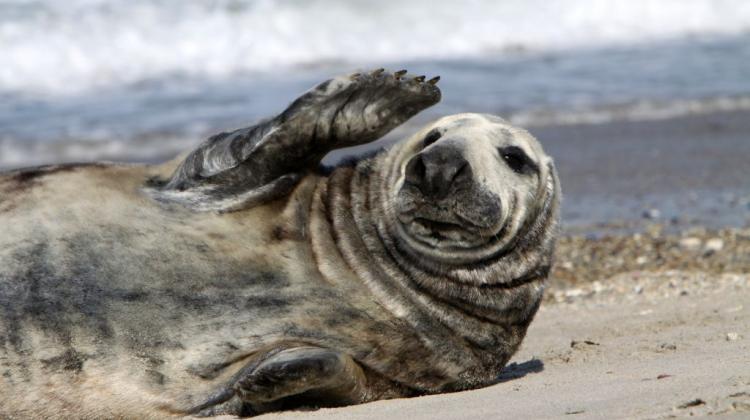Three seals from the Hel sealarium are pregnant

Three grey seals from the Hel sealarium are expecting puppies. If there are no complications, the young will be born at the turn of February and March, WWF representatives told PAP.
Seals Ania, Ewa and Unda Marina are becoming more round-shaped, which indicates advanced pregnancy. Assumptions of trainers from the sealarium of the University of Gdańsk Marine Station (Stacja Morska Instytutu Oceanografii Uniwersytetu Gdańskiego, SMIOUG) have been confirmed by the ultrasound: three females are expecting puppies. All foetuses are at an advanced stage of development. Their father is Bubas. If there are no complications, young seals will be born in Hel at the turn of February and March.
" After about three months in the sealarium and after special training, preparing for life in the wild, young seals will be released into the Baltic Sea - explained Monika Łaskawska-Wolszczak of WWF. - They will be given names starting with the letter +M+, because naming seals according to alphabetical order has become a tradition Hel. Each released seal will have a special transmitter. The device will track their journeys during the first six months."
The grey seal is the largest of the three species of the Baltic seals. Males grow up to 3 meters in length, reaching a weight of 300 kg. Females are slightly smaller. The size of the entire Baltic grey seal population is estimated at over 20 thousand animals (which is only 20 percent of natural population a hundred years ago). The largest populations of grey seals are found along the western coast of Estonia, the south-western coast of Finland and northern Sweden. On the south coast of the Baltic Sea (Germany, Poland, Russia and Lithuania), the animals were exterminated by man before the effects of environmental pollutants affected them. Today, single individuals come to our shores from other parts of the Baltic Sea.
The project of these animals restitution on our coast (Support for restoration and conservation of Baltic mammals in Poland) has been carried out for years by SMIOUG and WWF Polska. Seals are grown in pools with natural sea water. Offspring, after being nourished by the mother and mastering the skill of hunting live fish, is released into the wild in places that guarantee peace and safety of animals.
Seals from previous years could be observed on a special map at www.wedrowkifok.wwf.pl
PAP - Science and Scholarship in Poland
zan/ mrt/
tr. RL
Przed dodaniem komentarza prosimy o zapoznanie z Regulaminem forum serwisu Nauka w Polsce.















